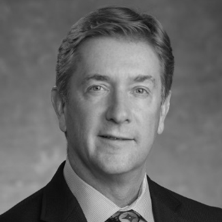
Gerald R. (Jerry) Mattys joined Tactile Medical in January 2005 as Chief Executive Officer. From 2002 to 2004, Mr. Mattys was Chief Executive Officer of Medisyn Technologies, Inc., a development stage biotechnology company. From 2000 to 2002, Mr. Mattys served as President and Chief Executive Officer of Timm Medical Technologies, Inc. where under his leadership, Timm Medical completed three strategic alliances and was successfully sold to Endocare, Inc. Mr. Mattys also held a variety of division management positions with Mallinckrodt, Inc. and Nellcor Puritan Bennett, Inc., most recently as Vice President and General Manager of Mallinckrodt’s Alternate Care Business (a $300 million division). He currently serves on the board of Tactile Medical and the American Venous Forum Foundation. His past board service included the American College of Phlebology Foundation, Medical Alley and as an advisor to Augustine Biomedical and Design, LLC.
6 Questions is a new interview series with Medical Alley leaders on the future of healthcare. Medical Alley Association’s membership includes leaders in healthcare delivery, payment, technology, and policy, which gives us – and in turn, you – access to diverse perspectives on how healthcare is changing and what lies ahead.
Medical Alley is the global epicenter of health innovation and care; 6 Questions, is meant to share insights and spark discussion. If you have a perspective on the future of healthcare, feel free to share it by reaching out to Frank Jaskulke, Vice President of Intelligence at [email protected]
This interview with Jerry Mattys, CEO of Tactile Medical, has been lightly edited for clarity and length.
Will the future of healthcare be most significantly defined by reigning in costs or accelerating outcomes?
In the near term, our future in healthcare will be shaped by cost containment. Payers today can exert tremendous power in the marketplace and the “easiest” way to extract additional value is by cutting costs, both their own and by reducing the prices that they are willing to pay for products and services.
Over time, we will move to getting the most value from improving outcomes for patients. Today, physicians and other service providers are often paid for the promise of a future improvement; products and drugs also enjoy compensation for assumed future benefit.
Real value in healthcare will be created by paying for real (not promised or assumed) improvements in patient outcomes.
What is the definition of value in healthcare today and what should it be?
Value today is delivering the same outcome at a lower cost. Value should be defined as improving patient function, lifestyle, and well-being at a reasonable cost. The focus should be on improving health and economic outcomes from the medical intervention.
What’s the biggest “blind spot” in healthcare today?
Payers desire to pay for outcomes while still reimbursing for procedures. The healthcare industry has been talking about paying for improved outcomes for years now, yet most health plans still pay for the intervention, not the outcome.
What’s your company’s or sector’s biggest “blind spot?”
Lack of appreciation of clinical and economic evidence. Our sector (home medical equipment) suffers from this mismatch: the desire for evidenced based medicine and payment systems that group differentiated products into non-differentiated “buckets” for payment. Paying the same rate (for items billed using the same codes) for products and services that have varying levels of peer-reviewed evidence dampens the investment in evidence generation. Evidence generation allows appropriate understanding of the product/service risk. Risk sharing between service/product suppliers and payers can only come about with an understanding of the clinical and economic impact of an intervention.
Why is a presence in Medical Alley critical to your company?
Access to healthcare experience, expertise, and talent is the most important reason for our presence in the Medical Alley region. As a manufacturer and provider of products to treat chronic diseases at home, we draw upon the region’s many health plans, medtech manufacturers, healthcare-savvy marketers, and service providers to help us grow. Hiring experienced healthcare team members reduces our training costs and allows quicker contributions from new team members.
What is the one thing, other than time or money, you wish you had more of?
Talented employees. We have tremendously talented employees in our organization today, but many open positions to fill due to our rapid growth. Having access to more talented individuals that want to positively impact the lives of patients is what we are constantly looking for.
About Tactile Medical:
Tactile Medical is a leader in developing and marketing at-home therapy devices that treat chronic swelling conditions such as lymphedema and chronic venous insufficiency. Tactile Medical’s Mission is to help people suffering from chronic diseases live better and care for themselves at home. The Company’s unique offering includes advanced, clinically proven pneumatic compression devices, as well as continuity of care services provided by a national network of product specialists and trainers, reimbursement experts, patient advocates and clinicians. This combination of products and services ensures that tens of thousands of patients annually receive the at-home treatment necessary to better manage their chronic conditions. Tactile Medical takes pride in the fact that our solutions help increase clinical efficacy, reduce overall healthcare costs and improve the quality of life for patients with chronic conditions. Visit www.tactilemedical.com for more information.
